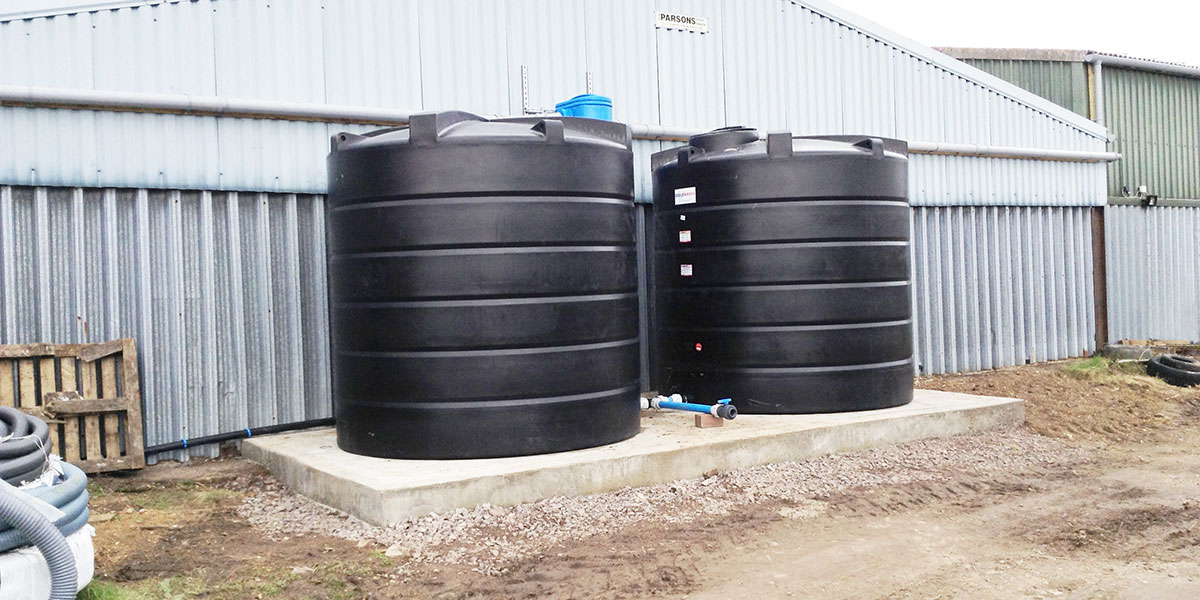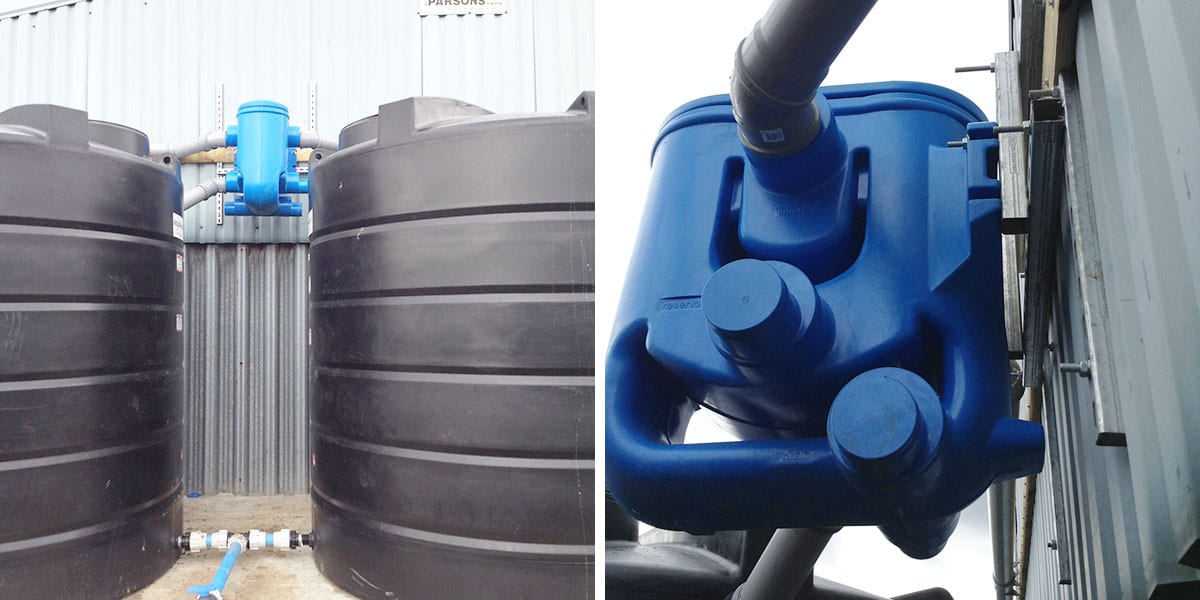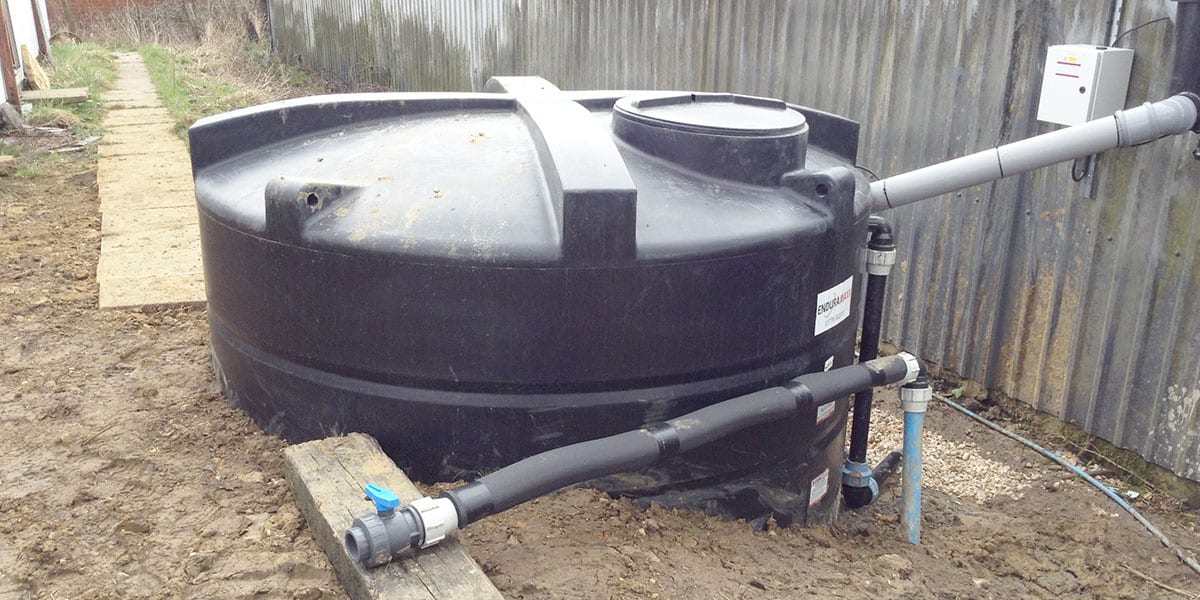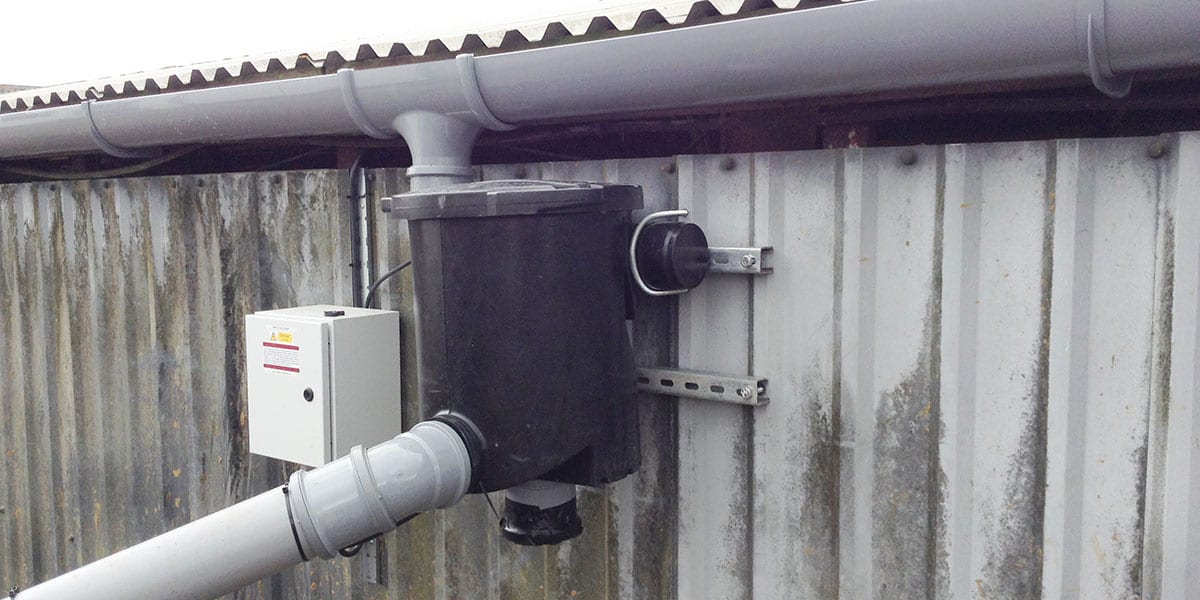Rainwater Harvesting
Rainwater Harvesting
The Freshwater Habitats Trust recently asked Pipefix to design and install a Rainwater storage system for one of their farms in Hampshire. The stored water is to be used for crop spraying.
Pipefix supplied and fitted three Enduramaxx 10,000 litre tanks and the following Rainwater Harvesting Kits:
Kit B: to service a 450m3 roof area and is better suited for WC flush and a better quality of water filtered, this filter can also be used for general garden use, vehicle washdown, dairy and much more. The filter needs to be be cleaned about two times a year, depending on contamination. 100mm connections, 0.65mm stainless steel mesh. This kit is suitable for use on tanks between 5,500-20,000 litres.
Kit C: to service an 800m3 roof area and has exactly the same filter mechanism as Kit B- again this filter should be cleaned twice a year. 100mm connections, 0.65mm stainless steel mesh. This kit is for use on tanks betwen 5,500-20,000 litres.
Both kits contains filter, siphon overflow, calmed inlet and internal pipe.
More About Rainwater Utilisation
With good planning and the right components a rainwater system can be nearly maintenance free and the rainwater quality is ideal for many uses, in both the home and the workplace. A professional system will have three stages of cleaning.
Roof areas
Only rainwater from roof areas should go into the storage tank. Smooth surfaced materials are the best (slate, tiles, glazed, cement, roofing slab). The rain yield from green roofs is 30-50% and whilst it can sometimes be a bit discoloured it is still suitable for toilet flushing and garden watering.
Cleaning step 1- Filter
The first cleaning step in the rainwater system is the filter. The rainwater flows from the roof to the filter. Here, dirt particles and debris are separated from the water. The cleaned water flows to the tank. The dirt is washed to waste or soaked away with a small amount of rainwater. All rainwater filters have colters, which are easy to remove and easy to clean.
Cleaning step 2-Calmed Inlet
Here the second cleaning step takes place. In the ater column, any residual particles settle to the bottom of the tank. The rainwater calmed inlet ensures that oxygenated water is introduced to the lower layers of the stored water in the tank. This oxygen rich water prevents anaerobic reducing conditions forming in the storage tank and ensures that the water stays fresh. It also allows water to enter the tank without disturbing the water that is already there.
Cleaning step 3- Overflow siphon
Any particles that are lighter than water (e.g flower pollen) float slowly to the water surface. The overflow siphon, with a skimmer effect, removes the floating layer. The overflow from the storage tank is important to get the optimum water quality. It prevents souring of the water. The floating layer could otherwise build up over time and so reduce oxygen diffusion at the water surface, which in turn could lead to anaerobic reducing conditions in the tank.
Client: Freshwater Habitats Trust
Site: Beaulieu
Works: Design and install Rainwater storage system








